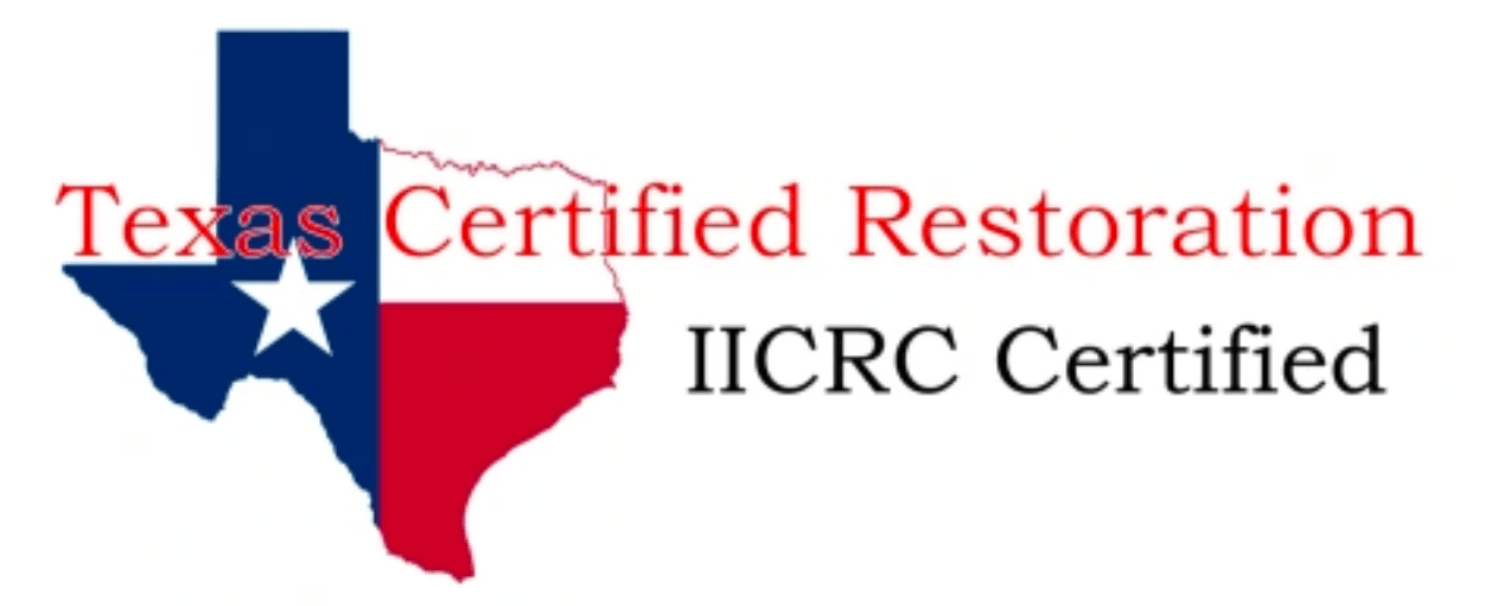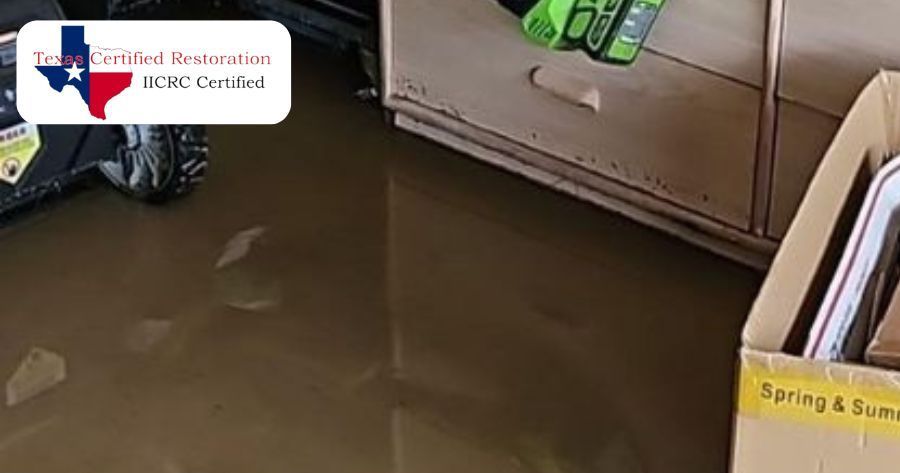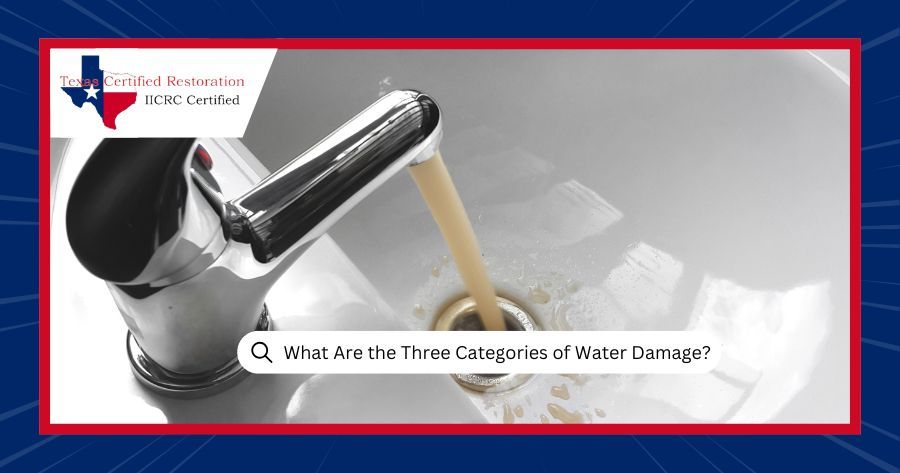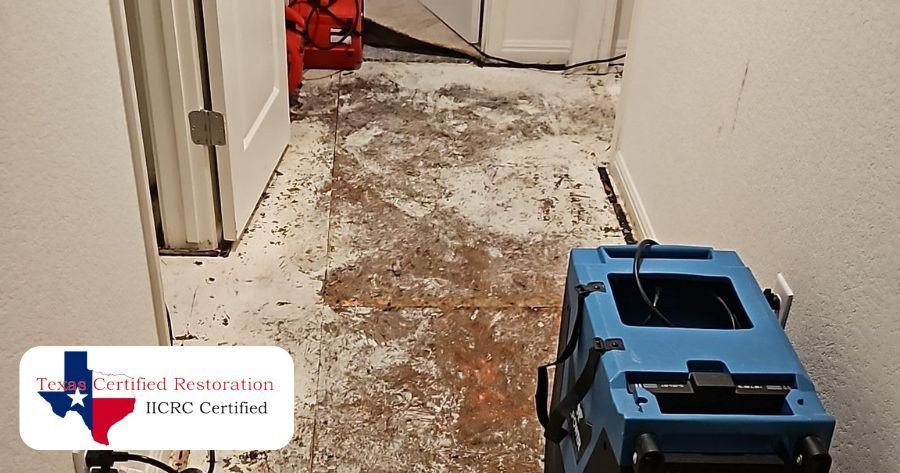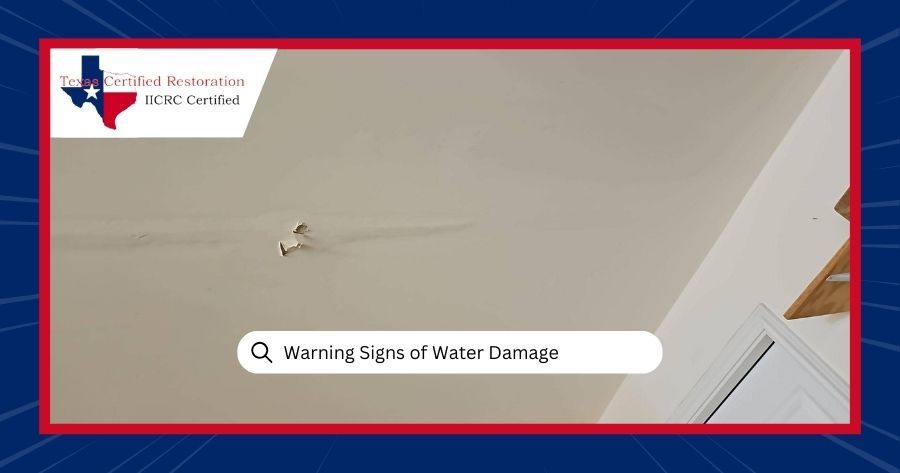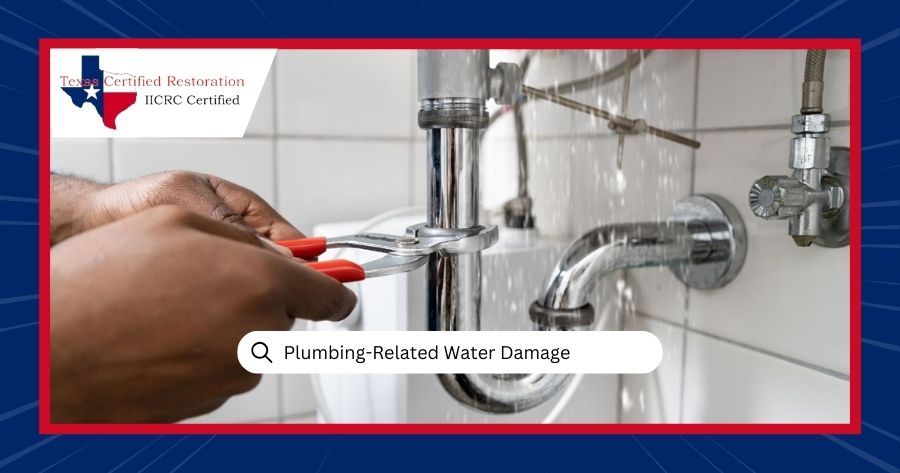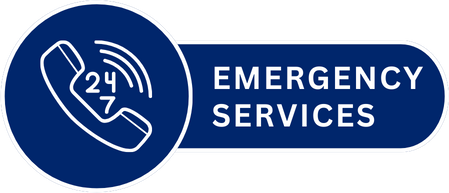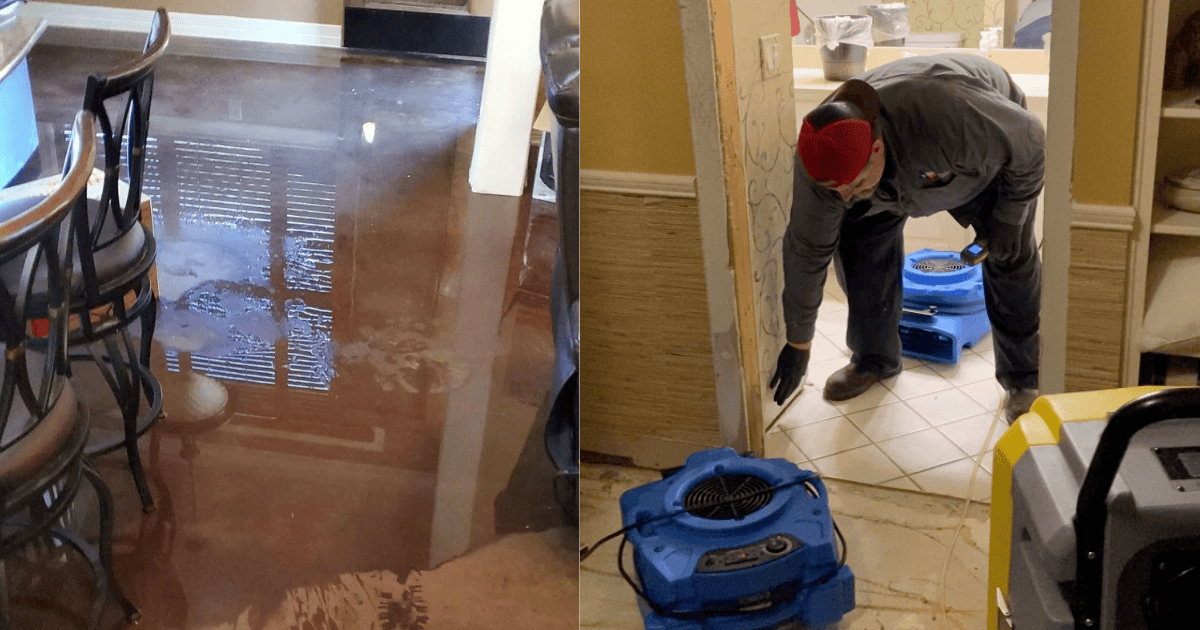
How To Clean Up Water Damage Safely In Austin TX
If your house or property has flooded, fast action is always necessary.
Not only do you want (and need) to be able to live in your home or operate your business again quickly, you also have to protect your property from water damage and costly repairs.
Here are the steps to clean up water damage safely.
1) Make sure the building is safe to enter
If you’ve been evacuated or forced to leave your property because of a major weather event, a burst pipe or a sewage backup, you should only consider re-entering if it’s definitely safe to do so. Ideally, you should wait for your local police or fire department to say you can return.
When assessing the situation, you must look for structural, electrical or other hazards.
Strong winds and flood waters can down power lines, while rushing water can cause breaks in gas mains. Be sure to check for the smell of gas outside your home and any dangling electrical wires, and call the utility companies (or police or fire department) if you find evidence of either.
Bring in a building inspector or structural engineer if you see any structural damage to the outside of the house, such as cracks or a shifting of the foundation.
Then, once you're reasonably sure that your house is structurally sound and safe to enter, here are the steps to take to clean up water damage safely.
2) Wear protective clothing
If your property has flooded, it’s not just water you need to worry about: all sorts of debris from drains, ditches and sewer lines can be dragged into your home. And when the water recedes, mud and many other toxic substances get left behind.
To protect yourself from allergic reactions and other health problems, you should wear protective clothing before entering a water-damaged property.
Ideally, you should wear clothing that covers your arms and legs. To protect your hands and face (and avoid breathing in mold spores and toxic fumes), you should also wear a mask, goggles and tight-fitting rubber gloves.
Anyone with a weak or compromised immune system shouldn’t enter a property until the cleaning is complete.
3) Assess the scene and file an insurance claim
Once inside the property, you must assess and document the damage to file a claim with your insurance provider as soon as possible.
If you have flood insurance, in general you only have 60 days to send in a proof of loss form documenting the contents of your home.
4) Remove all standing water and debris
Standing water is hazardous and must be removed promptly using the proper equipment for flood restoration and water damage at your home.Standing water can be dangerous and can make you vulnerable to infectious diseases, chemical hazards and injuries. It therefore must be removed quickly and handled by professional water damage restoration experts in Austin.
If the water is shallow, a wet-dry vacuum can remove it. However, if it’s deep, you may need to use a submersible pump.
You will also need to remove any contaminated debris brought in by the floodwater. Remove any wet silt and debris from your home using shovels or rakes, depositing it a safe distance away.
5) Dry out your home as quickly as possible
When you have a flood-damaged property, you’re in a race against time with mold.
Mold will start growing in damp places within 24 hours and you can have visible colonies within two days.
The first step is to air out your house. The best way is to get industrial fans and dehumidifiers into your property to eliminate excess moisture. Otherwise, turn on your air conditioner and every fan you own and exhaust the air toward open windows and doors.
6) Remove wet and damaged drywall and flooring
If the flooding is severe, you may need to discard paneling, drywall and insulation as these are particularly porous and vulnerable to water damage.
If you can't clean and dry them within 24 to 48 hours of your house being flooded, carpets and upholstery will need to be removed, too, to prevent mold growth.
Even if they appear dry, ceramic tile, sheet vinyl, laminate and solid wood floors should also be removed because moisture and silt collects underneath them.
However, nonporous materials, such as metal and glass, can be cleaned thoroughly with water and detergent and sanitized with a bleach and water solution.
Remember, if there's any item of value that has to be discarded, don’t forget to take a photo of it for your insurance claim.
7) Constantly monitor moisture levels
While you're airing out your home, use a humidity meter to monitor the moisture level. Maintaining a humidity level of between 30 and 50 per cent will inhibit mold growth.
A moisture meter is another good tool to have. It can help you detect dampness you can't see (anything above 16 per cent) in floors, walls, and furniture that may be dry to the touch but still harbor mold and bacterial growth.
Only with these tools is it possible to know when it’s safe to replace damaged drywall, flooring etc. This may take several weeks.
8) Hire a water damage restoration company
If this process sounds overwhelming, luckily there are experts on hand who can be at your property quickly and are equipped to start the water damage restoration process as soon as possible.
Read About - Flood Damage Restoration Process
Texas Certified Restoration, your flood cleanup experts in Austin TX
If you have water damage in your home or business, don’t hesitate to get in touch with Texas Certified Restoration.
We offer 24/7 emergency damage restoration services to property owners in the Greater Austin, TX area. Our expert team of certified technicians have both the knowledge and the equipment necessary to deal with any water damage scenario.
Give us a call on (254) 212-7183 to find out
how we can help you.
Get A Free Estimate
By filling out the form below
More To Explore

SERVICE AREAS
Texas Certified Restoration Service Areas
We Serve The Following Communities
Let Us Take Care of Your Home or Business
When disaster strikes, trust Texas Certified Restoration to handle your damage restoration needs. Our expert team is ready to restore your property, providing peace of mind every step of the way. Contact us today to learn more about our services and how we can help you recover quickly and efficiently.
Emergency Response Hotline
Get in touch with our 24/7 damage cleanup & restoration company today


We are IICRC certified and hire only the most trustworthy and dedicated team members to ensure that each job is taken seriously and handled with absolute professionalism.
QUICK LINKS
All Rights Reserved | Texas Certified Restoration | Privacy Policy
